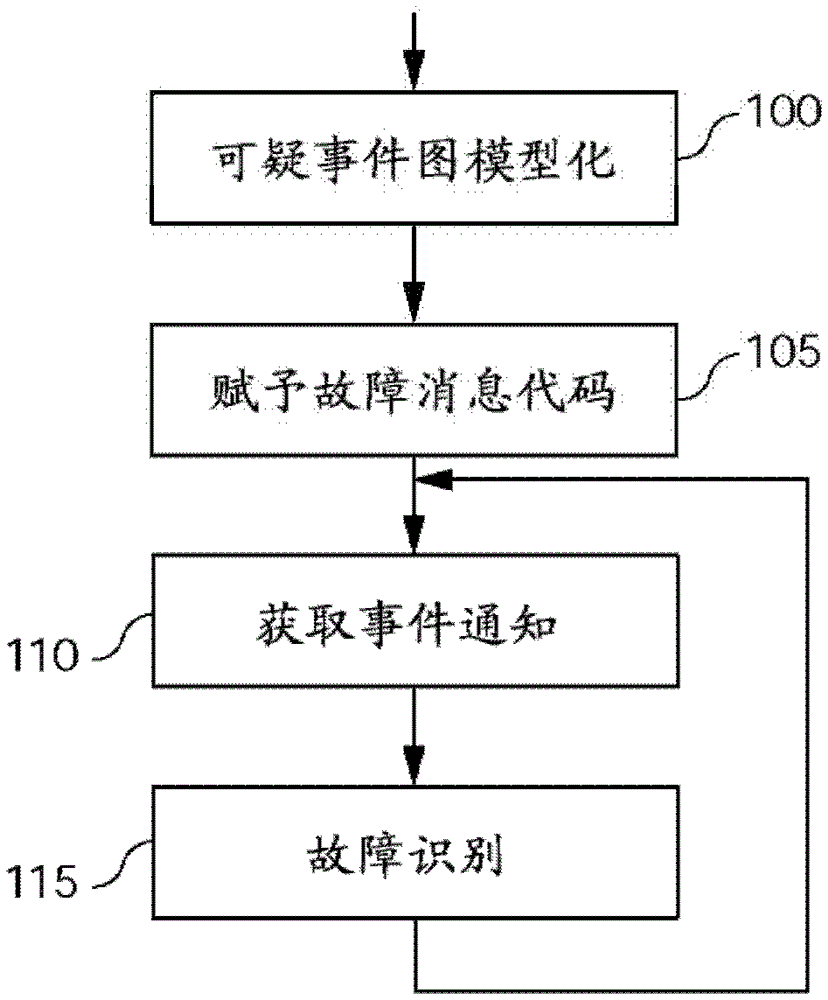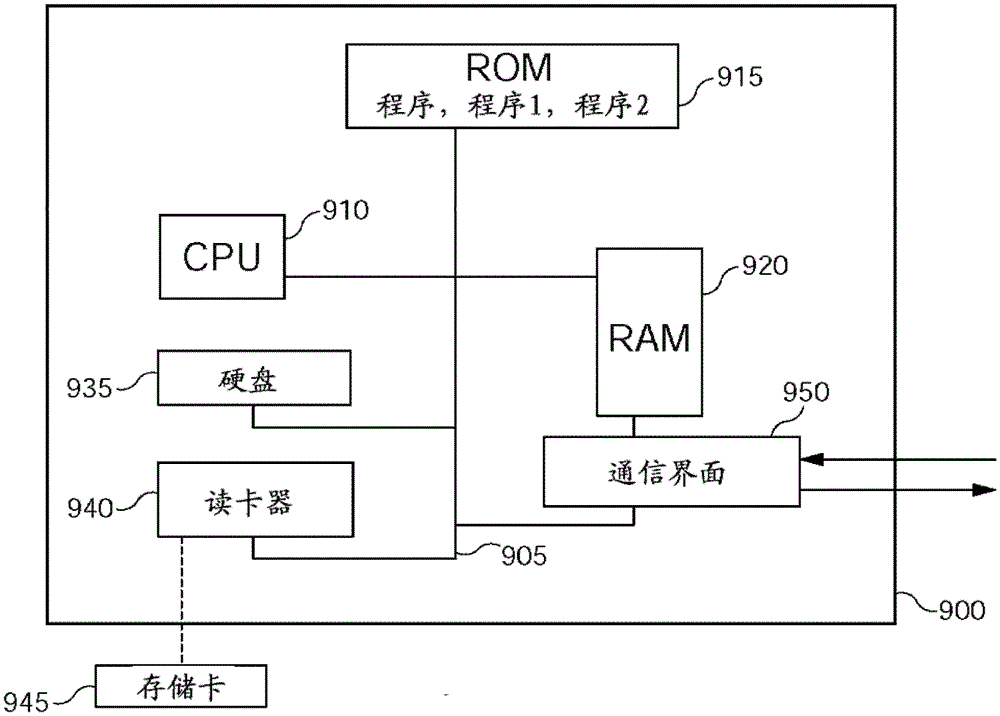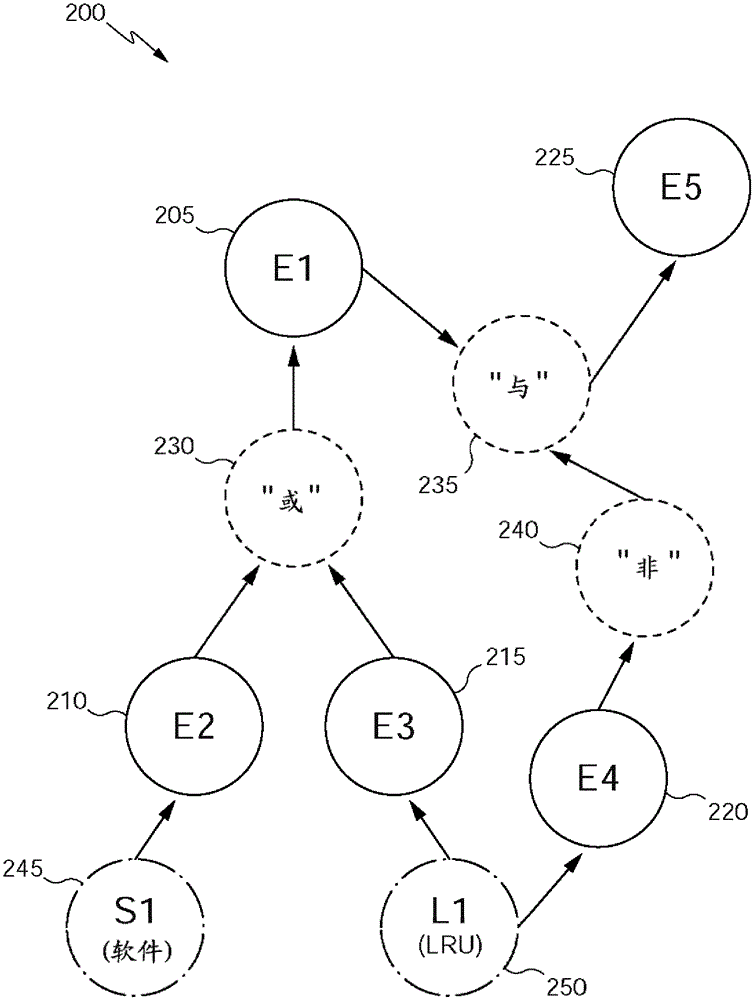Method and device for assisting aircraft system diagnosis using suspicious event graph
An event graph, aircraft technology, applied in the field of complex systems, which can solve problems such as incomplete results and long tasks
- Summary
- Abstract
- Description
- Claims
- Application Information
AI Technical Summary
Problems solved by technology
Method used
Image
Examples
Embodiment Construction
[0040] In general, the present invention is directed to a diagnostic assistance system for an aircraft system that uses graphs of suspicious events (or "failure condition graphs" in English terminology), here based on fault trees developed during safety studies (called "faulttree" in English terminology).
[0041] as in figure 1 As shown above, the overall approach is broken down here into four phases. The first phase (phase 100) is directed to the modeling of the graph of suspicious events. For an example of this type of modeling see figure 2 and image 3 to describe. The purpose of the second stage (stage 105) is to assign fault message codes to the pre-modeled graph of suspicious events. The third stage (stage 110 ) consists in obtaining the event detection notifications sent by the aircraft monitoring system in real time or time difference. Finally, in a fourth stage (stage 115 ), fault identification algorithms are executed by a machine, preferably automatically, t...
PUM
 Login to View More
Login to View More Abstract
Description
Claims
Application Information
 Login to View More
Login to View More - R&D
- Intellectual Property
- Life Sciences
- Materials
- Tech Scout
- Unparalleled Data Quality
- Higher Quality Content
- 60% Fewer Hallucinations
Browse by: Latest US Patents, China's latest patents, Technical Efficacy Thesaurus, Application Domain, Technology Topic, Popular Technical Reports.
© 2025 PatSnap. All rights reserved.Legal|Privacy policy|Modern Slavery Act Transparency Statement|Sitemap|About US| Contact US: help@patsnap.com



